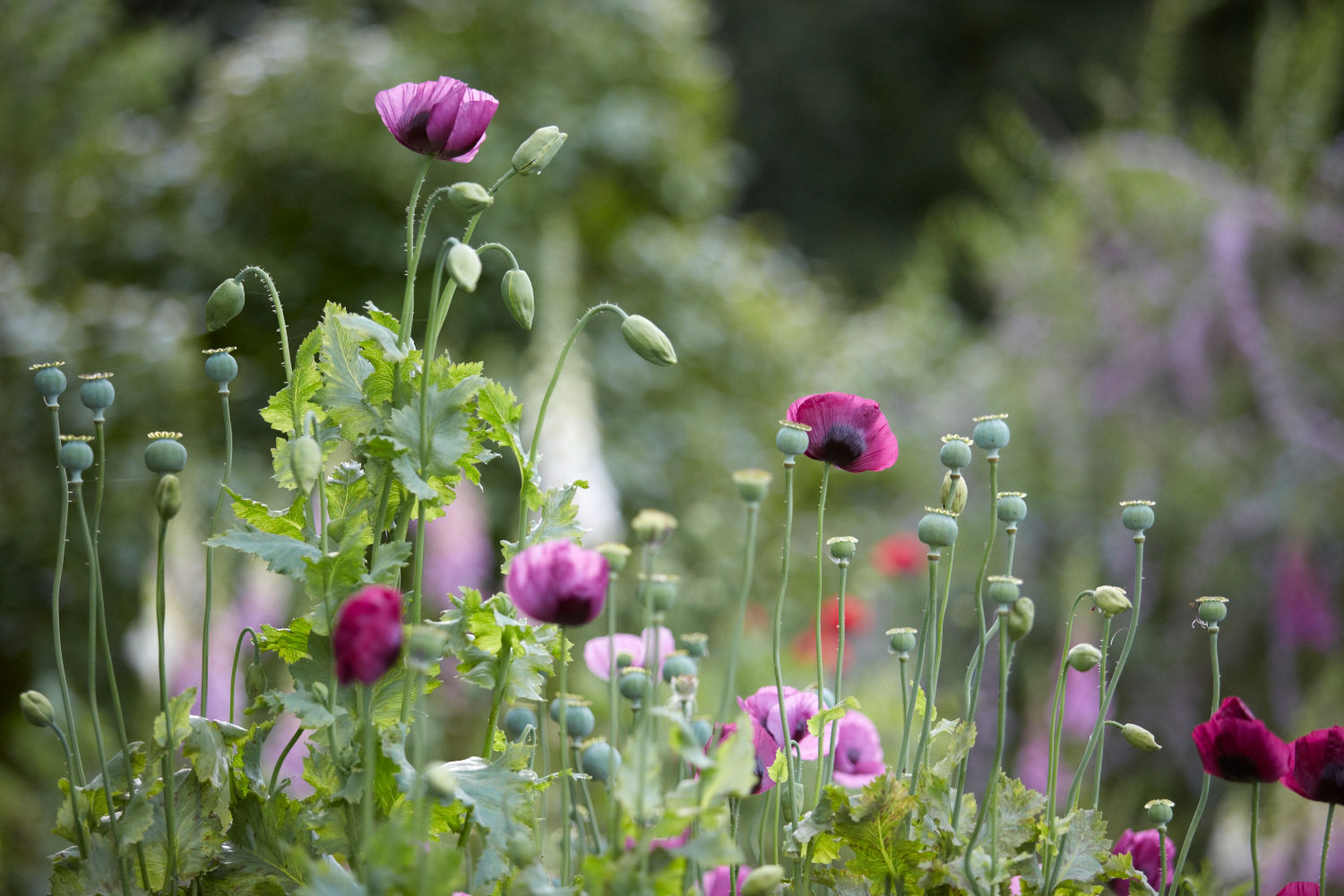
Color in a garden can cause angst, aided by fears of errors in taste. And yet, we know deep down that color is good for us.
Photography by Britt Willoughby Dyer.
Self-seeded serendipity, a mix of selected opium poppies and wild foxgloves in James’ half-acre English garden.
Using what’s available: Pale Digitalis lutea, from a free seed packet on a magazine, glows against the jewel shades of Papaver somniferum.
Opium poppies, in shades of amethyst and plum, are a key flower for James and his family, to the extent that he and his children have been tattooed with them; the younger generation in bud and bloom, while he sports a desiccated seed head (on his arm, if you’re wondering).
A rose for the zeitgeist, R. x odorata ‘Mutabilis’ doesn’t have the scent promised by its name but it does flower all season.
The name of this meadow rue is not just the fantasy of a plant breeder.
A hybrid between California and Chinese sweetshrub, Calycanthus x ‘Aphrodite’ is a staple in James’ gardens, along with its ivory-colored relation, Calycanthus ‘Venus’, both of which thrive in USDA zones 5-9.
Received wisdom says that white can cause havoc in a scheme of harmonious colors but if you are looking at shades of off-white, the result is enlivening rather than jarring.
A useful magnolia to bear in mind as it flowers late and is more likely to survive untimely frosts: Magnolia x wieseneri.
Deep purple (salvia) and deep pink are brought together by a pale umbellifer. Walking around the garden, I ask whether James has mapped any of it in terms of color.
A giant rusted Corten steel ball has been rolled into place to cover a dry area underneath a shallow-rooting birch.
“There’s a very troublesome bit where that enormous ball is: very little grows under the birch trees. It’s too dry and too full of roots, so we decided that what we needed was a distraction.” The ball was rolled into place.
A flight of steps near the pond hovers like a staircase in a 1930s musical – if Busby Berkeley had chosen weathered Corten steel.